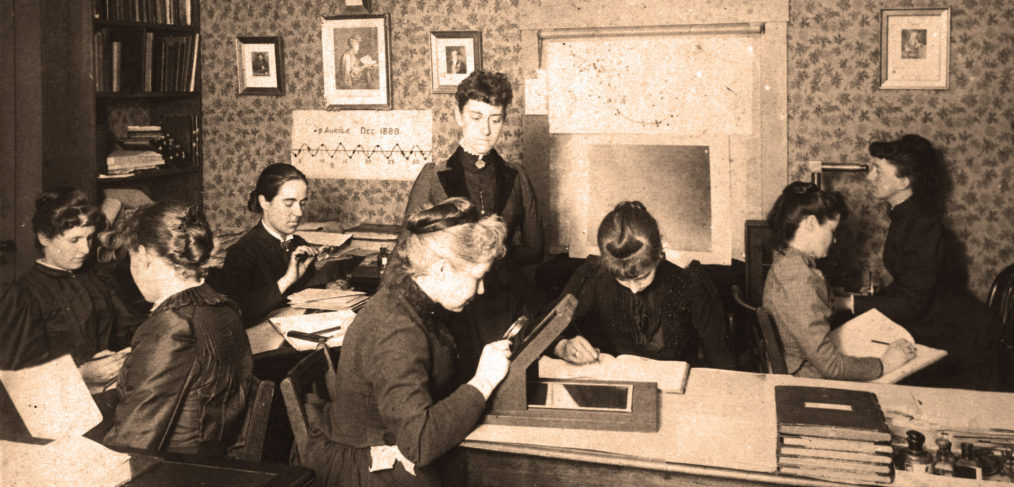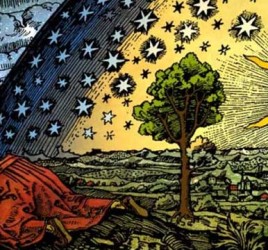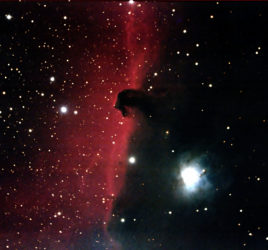
Women in 19th Century Astronomy
In the late 19th century, Harvard Observatory hired a group of women for the job of Computer.
The job was measuring the positions of stars and analyzing star spectra on glass plate photographs. They painstakingly reduced the X-Y positions of the stars to Right Ascension and Declination via trigonometry, cataloging 855,000 stars. Women were not allowed to work at night at the telescope as this was against the morals of the time. Several of the women had degrees in Physics, Chemistry and Mathematics and were daughters and nieces of professional scientists. They jumped at the chance to work in professional Astronomy and even offered to work for no pay. Harvard Observatory had fallen on hard times financially and the director, Edward Charles Pickering, had proffered that he could hire 10 women for the salary of one male astronomer. The wage offered to the women was 25-cents per hour. He eventually had 40 women working at low wages processing data.
The Women Computers were Competent and Diligent.
The women computers were aware that they had to build a reputation in professional astronomy. The Harvard Computers were derisively deemed “Pickering’s Harem”. The office manager was Williamina Fleming, a competent mathematician who reviewed the work and published the results. Their published work stands up well under scrutiny.
Oh, Be A Fine Girl Kiss Me
Spectroscopy was just beginning, and the women had to invent the methodology. They began by counting the Fraunhofer lines in the star spectrum. They devised a scheme of increasing numbers of lines classed in increasing alphabetical sequence. Fewest lines were A-class. The physics majors could find no logical reason for the sequence of A-Z. Eventually, they reorganized by temperature resulting in OBAFGKM. We remember it by the phrase “Oh, Be A Fine Girl Kiss Me”. This worked very well as the O-type star is the largest mass stars and the mass decreases in sequence. The missing letters were found to be closely related to these major classes and they were dropped in favor of a scheme where each major class had subdivisions of 1 to 9. B-9 was next to O-class, B-1 was next to A-class. O-class stars were massive and could be over 150-times the mass of the Sun, a Blue Super Giant. The smallest M-class would be 8% the mass of the Sun, a Red Dwarf. Counts of the abundances of each class revealed that less than 1% of the stars are O-class and 70% are M-class. This eventually led to the rule of thumb, “Twice the mass, one-tenth the lifetime”. Massive stars have very short lifetimes, less than 1-Million years. Low Mass stars have long lifetimes, up to 25-Trillion years.



